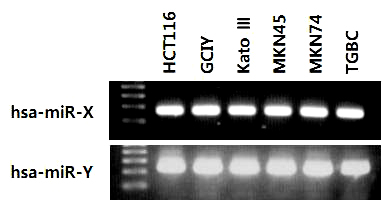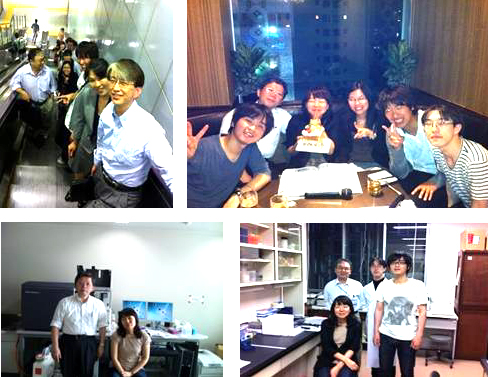Dr. Seol from Korea stays in TMDU, Japan: Part2
A3 Foresight Program: Education Program for Young Researchers
Report of visit to TMDU in Japan (May 31– June 10, 2011)
SEOL HYANG SOOK (Department of Pathology, Asan Medical Center)
Host researcher
Prof. Yasuhito Yuasa, M.D Ph.D (Department of Molecular Oncology, Graduate School of Medical and Dental Sciences, Tokyo Medical and Dental University)
Summary
As the education program for young researchers of A3 Foresight Program, I visited Prof. Yasuhito Yuasa’s laboratory (Department of Molecular Oncology, Tokyo Medical and Dental University) in Japan for 10 days. During this period, I learned lots of techniques for cancer stem cell culture and histone modification analysis. First, I learned how to culture human cancer stem cells to expand them in vitro. Second, I learned how to determine the function of epigenetically silenced microRNAs in tumor cell lines. We recently obtained evidence that the expressions of several miRNAs were significantly changed when the cells were treated with a demethylation agent, suggesting that expression of miRNAs is epigenetically regulated. My visit to TMDU gave to me a great experience and big stimulus for my research spirit. Finally, I am so thankful to Dr. Se-Jin Jang and Prof. Yasuhito Yuasa for giving me this chance. I hope that A3 Foresight program develops more and more.
Contents
1. Isolation and cultivation of gastric cancer stem cells (from Dr. Hiroshi Fukamachi)
After collection of human gastric cancer xenografts, we cut and used them for isolation of gastric cancer stem cells using FACS AriaII. After isolation of cancer stem cells, we cultured them in various conditions and examined which condition was good to culture them.
2. Analysis of epigenetic changes in miRNA
2-1: Detection of expression of precursor miRNAs by 5’ RACE method (from Dr. Yutaka Hashimoto)
This method is usually used to extend partial cDNA clones by amplifying the 5′ sequences of the corresponding mRNAs. We used this to detect expression of precursor miRNAs in various gastric cancer cell lines. We found that miRNA precursors were expressed in various gastric cancer cell lines.

Fig. 1 Precursor miRNA expression patterns in several gastric cancer cell lines.
a. 5’ RACE system, version 2.0 (InVitrogen)
b. TaKaRa Ex Taq
c. Qiaquick Gel Extraction Kit (Qiagen)
d. Primers – anchor primer
Universal primer
2-2: Chromatin immunoprecipitation (from Dr. Yoshimistu Akiyama)
Chromatin immunoprecipitation (ChIP) is used to investigate the interaction between proteins and DNA in the cell. It aims to determine the specific location in the genome where specific proteins interact. By using anti-histone antibodies, targets of histone modifiers can be identified by ChIP.
a. ChIP-ITTM EXPRESS (Active Motif # 53008)
b. Ant – Histone H3 antibody
c. ChIP PCR primers
p16 (CDKN2A) promoter – 176bp
hMLH1 promoter – 250bp
3. Communications
1. Attendance of Lab. Meeting on Jun. 8th
2. Presentation of my current study in Lab. Meeting
3. Discussion about cancer stem cell (CSC) experiments with Dr. Hiroshi Fukamachi
4. Discussion about miRNA experiments with Dr. Yoshimistu Akiyama
5. Receiving the protocol related to various miRNA analysis from Dr. Yutaka Hashimoto and Dr. Shu Shimada.
Photos and acknowledgment

I thank Dr. Yoshimistu Akiyama and Dr. Hiroshi Fukamachi for instructing the experimental techniques and methods for miRNA and FACS analyses, and all laboratory members for the warm hospitality. I sincerely thank Prof. Yasuhito Yuasa for kind acceptance and all arrangement for me to visit TMDU.



